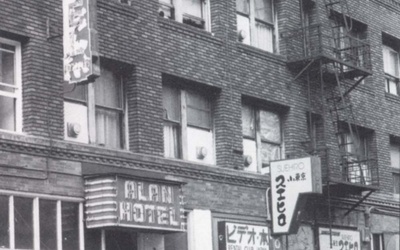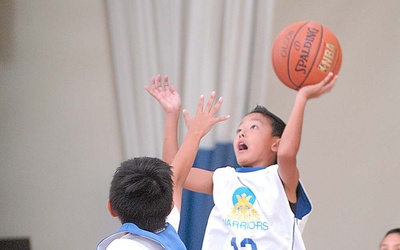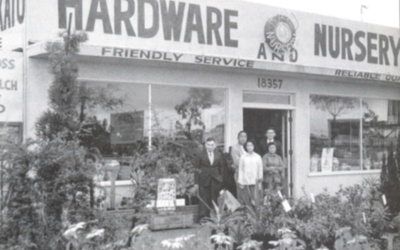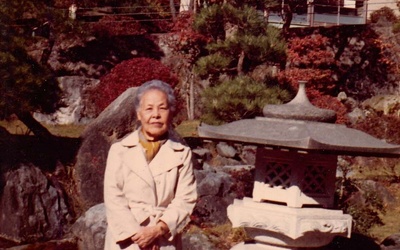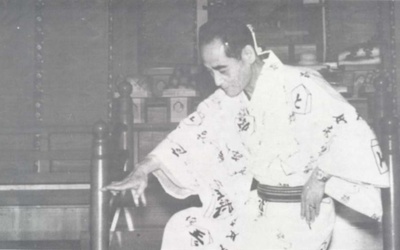Nanka Nikkei Voices
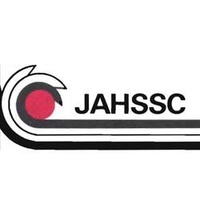
Nanka Nikkei Voices (NNV) is a publication of the Japanese American Historical Society of Southern California. Nanka means “Southern California.” Nikkei means Japanese American(s).” The focus of NNV is to record the stories of the Japanese American Community in Southern California through the “voices” of average Japanese Americans and others who have a strong connection to our history and cultural heritage.
This series introduce various stories from the past 4 issues of Nanka Nikkei Voices.
Stories from this series
The Alan Hotel
March 15, 2016 • Naomi Hirahara
For journalists, there are stories, perhaps only a handful, that never leave you. That’s the way I feel about the Alan Hotel in Little Tokyo. It was almost a lifetime away, in 1986, when I was a foot soldier, or more officially a reporter, for The Rafu Shimpo Japanese American daily newspaper. I wore my long hair wild in perm, with bangs cut short so I could see. Seeing was important for a reporter—and what I was about to witness …
The Elevator Encounter
Oct. 8, 2015 • Ellen Endo
About a year ago, a friend and I were boarding an elevator in a downtown high-rise. I pushed the button for the fifth floor. My friend wanted to know how The Rafu Shimpo manages to gather the student’s names for it graduation issue every year. “It’s getting harder and harder every year,” I admitted. “School officials don’t always want to give us the names of students of Japanese ancestry.” A man, who was already standing in the elevator, overheard us …
Legacies
June 19, 2015 • Iku Kiriyama
For Japanese Americans of my generation (second generation Nisei over 60), the source of our moral and cultural values is both clear and easily defined. Our moral and cultural values spring from the Japanese cultural heritage of our parents and grandparents. If a group of Nisei, unacquainted with each other, were to gather in a room and a discussion arose about our childhood days, you would find an instant bond as the sharing of stories showed common stories of Issei …
Resettlement
June 10, 2015 • Martha Nakagawa
Akio “Lawrence” Nakagawa, a Kibei from the Sacramento Delta region, was interned at the Topaz, Utah camp. Answering the loyalty question “No-No,” he was transferred to Tule Lake, California, where he remained until the war ended, leaving in September of 1945. When he was released from Tule Lake, he decided to head towards the Midwest to Minneapolis, Minnesota. There, he enrolled himself at the North Central Bible School, a school he had heard about through an Oakland-based Caucasian minister whom …
Earlier Generations
May 6, 2015 • Brian Niiya
One of the things I have finally learned is that there are late people and early people. There are late families and early families. And there are late generations and early generations. I come from an early family. My parents would habitually show up everywhere half-an-hour early. I learned early on that if we were going to pick someone up at the airport, for example, there was going to be at least a 30-minute wait if the plane was on …
The Okazaki-Kuida Resettlement
April 20, 2015 • Jenni “Emiko” Kuida
Both of my parents were young children when E.O. 9066 was signed. My mom, Machiko Okazaki, lived in four places from the ages of four to seven years old. Santa Anita Race Track. Heart Mountain, Wyoming. Crystal City, Texas. Seabrook Farms, New Jersey. My grandfather, Masashi Bancho Okazaki, a Tenrikyo minister, had been separated from the family because of his occupation as a minister. He was reunited with my grandma and her five children in Crystal City in 1944. Their …

